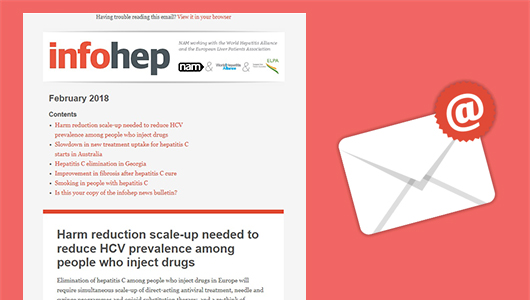Depression, anxiety and cognitive performance each improved
significantly in people cured of hepatitis C, Indian researchers report in the Journal
of Viral Hepatitis.
Anxiety and depression are frequently reported by people
with hepatitis C at all stages of liver disease. Neurocognitive impairment –
including slowed mental processing speed and reaction times, reduced attention
span and verbal fluency, and impaired memory – may affect up to half of people
with hepatitis C. The impact on the brain may be twofold in hepatitis C: by a
direct impact of the virus, and indirect impact of advanced liver disease. The
hepatitis C virus has been found to infect, and replicate, in brain cells. On
the other hand, hepatic encephalopathy is a decline in brain function seen in
late-stage liver disease when the liver can no longer remove toxins from the
blood. Hepatic encephalopathy may appear in any late-stage liver disease,
regardless of the course. Its symptoms range from sub-clinical symptoms to
severe forms of neurocognitive impairment including confusion and coma.
The
Indian state of Punjab provides treatment for hepatitis C and comprehensive
health care at 25 decentralised clinics. The Punjab public health treatment
model uses a pangenotypic regimen, either sofosbuvir/daclatasvir for people
without cirrhosis or sofosbuvir/velpatasvir for people with cirrhosis.
Researchers
at Chandigarh University recruited 385 people who started treatment between
June 2018 and March 2020, to assess the impact of hepatitis C cure on mental
health conditions and neurocognitive functioning.
Study participants exhibited substantial cognitive impairment
at baseline, regardless of cirrhosis status, when compared to healthy controls
or people with non-alcoholic fatty liver disease.
People who were cured of hepatitis C experienced significant
improvements in depression, anxiety and cognitive function, whereas those who
were not cured experienced no change or deterioration in various measures. They
showed significant improvements in reaction time, visual memory, concentration,
attention and processing skills and short-term and working memory. In contrast,
scores on these tests deteriorated in people who were not cured.
The study investigators say theirs is the largest
prospective cohort study of neurocognitive changes after hepatitis C treatment
to date, recruiting almost ten times as many participants as any previous
study, and its findings are strengthened by the exclusion of people with a
prior history of hepatic encephalopathy.







Connect with infohep on Facebook: Keep up to date with all the latest news and developments.
Follow infohep on Twitter for links to news stories and updates from infohep.org. Follow us at www.twitter.com/infohep.
Follow all the infohep news by subscribing to our RSS feeds.